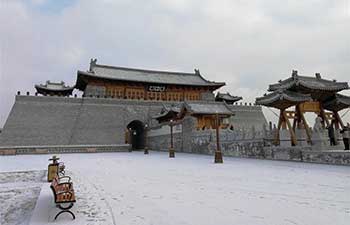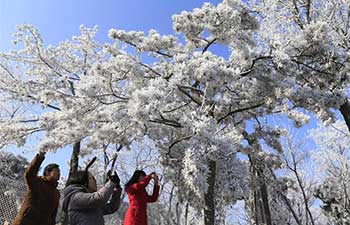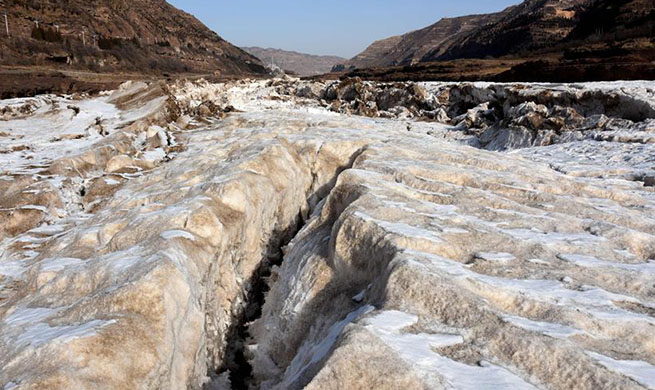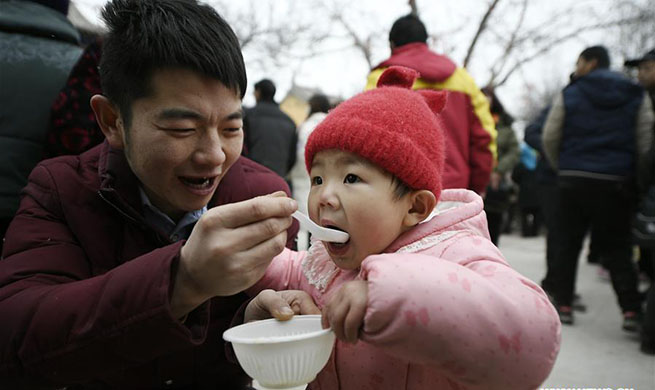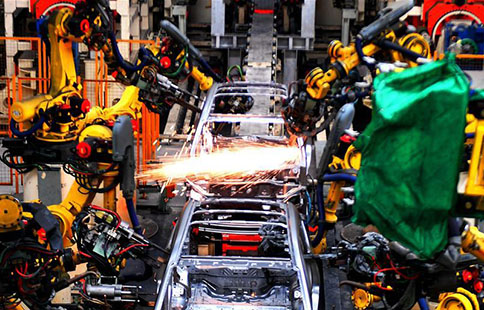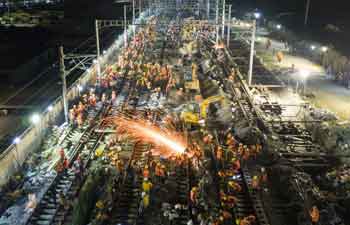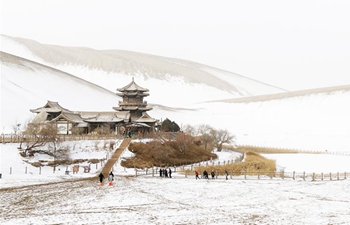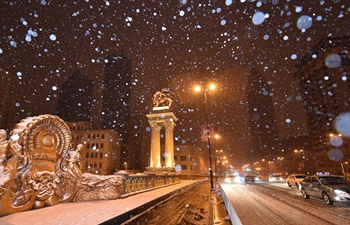By Dario Agnote
CAMALIG, the Philippines, Jan. 24 (Xinhua) -- More than 70,000 people have left the immediate danger zone around the erupting Mayon volcano in the Philippines, but still many villagers, mostly males, refuse to leave their homes to protect their farm and farm animals.
The Philippines' most active volcano, located in Albay province approximately 300 km southeast of Manila on the island of Luzon, has been in a state of unrest since Jan. 13 and it now continues to emit fountains of red-hot lava and massive ash plumes every four or five hours.
As of 5 p.m. on Wednesday, the government said at least 18,904 families, or 72,091 villagers, from 57 villages have been evacuated. The displaced people are being housed in 57 temporary shelters, mostly schools.
Novelyn Alimania, 52, from Salugan village in Camalig town near the Mayon volcano, and her family are among those who fled their homes and now staying in a grade school in Baligang village along with more than 1,000 other villagers. "It's difficult to live here in the classrooms with many other families but there's nothing we can do about it. It's dangerous to stay in our village," she told Xinhua.
"We can't use the school toilets because most of the toilets are out of order. We can't cook because there is not enough space yet to cook food," Alimania said. She said the husbands usually go back to the village at night to man the house and come back to the evacuation centers with cooked food in the morning.
Some of the evacuees complained that the classrooms are crowded and crammed with the belongings they carried with them such as clothes, electric fans and the like.
But Salugan village leader Nonito Nebres said he is trying to set up a public kitchen and toilets in the center. "We're working on that," he said, adding that he is also awaiting help from the government like rice ration, canned foods, mats and blankets.
He said villagers need to heed the call to flee because the whole village is within the danger zone area. "We could hear the rumbling sound above us. It's like several airplanes are taking off at the same time. It's scary," he told Xinhua.
Between 8:54 a.m. on Tuesday and 3:57 a.m. on Wednesday, The Philippine Institute of Volcanology and Seismology (Phivolcs) said it has recorded "five episodes of intense but sporadic lava fountaining from the summit crater lasting seven minutes to an hour and 30 minutes."
The institute said the lava fountains reached 500 to 600 meters high and generated ash plumes that reached 3 to 5 km above the crater.
Tuesday's events also prompted authorities to widen the danger zone around the volcano which has a 20-km base diameter.
Nebres said a total of 303 families or 1,047 people from Salugan village are now housed in the Baligang Elementary School. However, he said that 200 families refused to leave the village despite the danger of violent volcanic eruption.
Nebres said it is a challenge for the evacuees to live in crowded classrooms with limited toilets, where water and food are scarce. "But we must make do of what we have at the moment," he said, lamenting that a number of children are starting to get sick.
Local disaster official Maricel Nocite told Xinhua that some 9,000 people from several villages have been evacuated in Camalig town alone. "We expect the number to rise. It depends on the activity of the volcano," she said.
Nocite said the villagers from Salugan have been in the same situation in 2014 when Mayon volcano also erupted. The villagers took shelter in the school from August to December in 2014. "We had to set up temporary shelters in the school ground to accommodate everybody at that time," she said.
Tandarora, a village in Guinobatan town, also in Albay, is also covered in ash. Most of the villagers have left except for a few, including 63-year-old farmer Tin Labanaan. He told Xinhua that his family is now staying in a grade school in Binagsacan with the villagers.
Labanaan said he decided to stay put with some of the male villagers and an elderly woman all wearing masks and hats to cover their heads from the falling ash. The group was sun drying rice grains on the pavement.
"We are used to this. We know when to leave the village," Labanaan said. Mayon also erupted in 1968. Before the big eruption, Labanaan said that small stones the size of a tip of a pinky started to drop from the sky. "That's when we decided to leave the village," he said.
A check with Phivolcs shows that the Mayon volcano indeed erupted from April 21 to May 15 in 1968. An explosion broke the southwest crater of the volcano allowing lava to flow slowly down the slopes. Six people were reportedly killed in that eruption.
Ash covered cars, houses, buildings, roads as well as plants in the volcano's southwest towns of Camalig, Guinobatan and even some towns of nearby Camarines Sur. Ash also forced authorities to close airports in the cities of Naga and Legazpi.
Authorities have urged people in the area and tourists to remain calm and stay out of the designated danger zone which covered a radius of 9 km around the volcano.
Mayon volcano is a popular tourist destination in the Bicol region. It is famed for its near-perfect cone but has a long history of deadly eruptions. It has erupted 51 times during the last 400 years.
The dazzling nightly display of incandescent lava attracted tourists to make a weekend trip to Legazpi to witness the sporadic eruption.
Mayon volcano, which has an elevation of 2,462 meters and a base diameter of 20 km, last erupted in 2014.
In an 1814 eruption, more than 1,200 people were killed and three towns were buried under mud and rock.
The Philippine archipelago straddles the Pacific "Ring of Fire" and is prone to earthquakes and volcanic eruptions.





